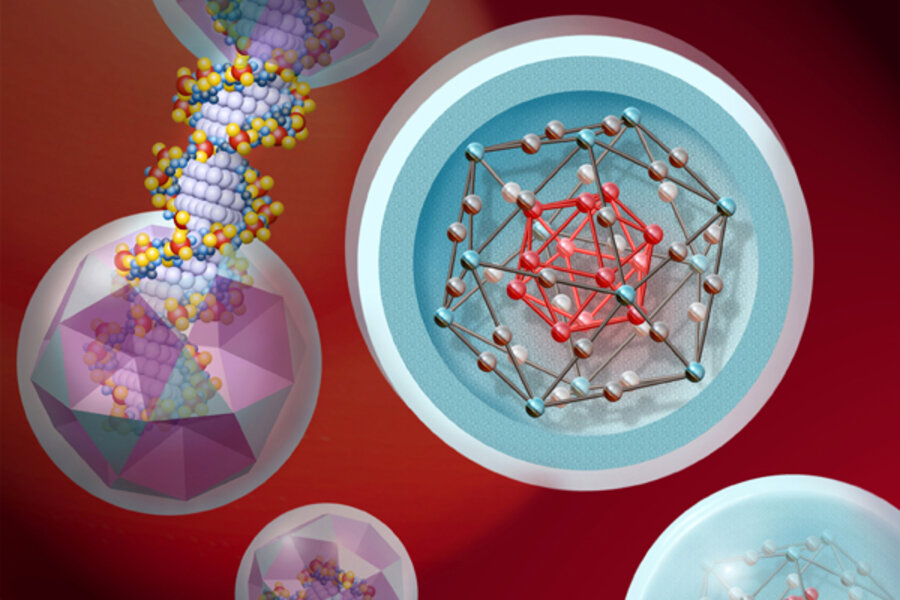Why atom-size gadgets must shape up
Loading...
For engineers who measure their gizmos in atom-size dimensions, getting size and shape just right is the key to success. A few nanometers (billionths of a meter) off that right size or a misplaced wrinkle can ruin an exquisitely designed nano "tool." Mastering these poorly understood design principles will have big practical payoffs.
For example, food scientist Yuan Yao at Purdue University in West Lafayette, Ind., has found a way to reshape nanoparticles derived from sweet corn that transforms them into a powerful food preservative. Meanwhile, chemist Scott Anderson at the University of Utah in Salt Lake City has shown that size directly affects the electrical properties of metal nanoparticles used as catalysts to make certain chemical reactions happen. "People had speculated this should be happening but no one has ever seen it [before]," he says.
If that sounds like something only a chemist would whoop about, consider this. Because chemists don't really know how to design a catalyst, they use expensive metals like gold or platinum that they know from experience will work. Think of a car's catalytic converter. Yet as Dr. Anderson notes, 90 percent of the particles in a gold catalyst are too big to be active. Only nanoparticles with about 10 atoms each seem to do the work. "If you could make a catalyst with only the right size particles, you could save 90 percent of the cost or more," he says.
What chemists really want is to learn to make catalysts from cheaper metals. Anderson explains that "the way you are going to do that is by tuning their chemical properties, which means tuning the electric properties because the electrons control the chemistry." That means finding the nanoparticle size that turns a catalytically inactive metal into a chemical superhero. And that strong correlation between size and activity is what the research Anderson and his students published last month in Science has demonstrated for the first time.
They did it with expensive palladium. But they see this as a first step on the path to the ultimate goal of learning how to find the right particle size to turn on the catalytic power of less costly metals. Given the fact that catalysts contribute 35 percent or more of the world's gross domestic product, according to the North American Catalysis Society, that would be a very big deal indeed.
Yuan Yao's new insight into food preservation could also have a big impact. Oxidation of oils and other constituents spoils a lot food. Earlier this month, Yao and his colleagues reported in the Journal of Agriculture and Food Chemistry online how they shaped a nanoparticle into an oxidation shield. They reshaped the surface of particles of a starchlike substance called phytoglycogen taken from sweet corn. This made the particles a much better emulsifier than those commonly used to defend against oxygen. The researchers also found they could get even better protection by filling in the gaps between their reshaped corn particles with even smaller particles of a food-grade additive called polylysine. Yao's nanoparticle "shield" slowed down oxidation in sample products. It doubled shelf life in some cases. He's confident enough of this result to predict the process "can be widely used in the food industry."
Like scientifically sized and shaped garments for humans, carefully tailored nanoparticles can turn ordinary performers into athletes.





